Here's The Weird Sh*t Andrew Zimmern Keeps In His Fridge
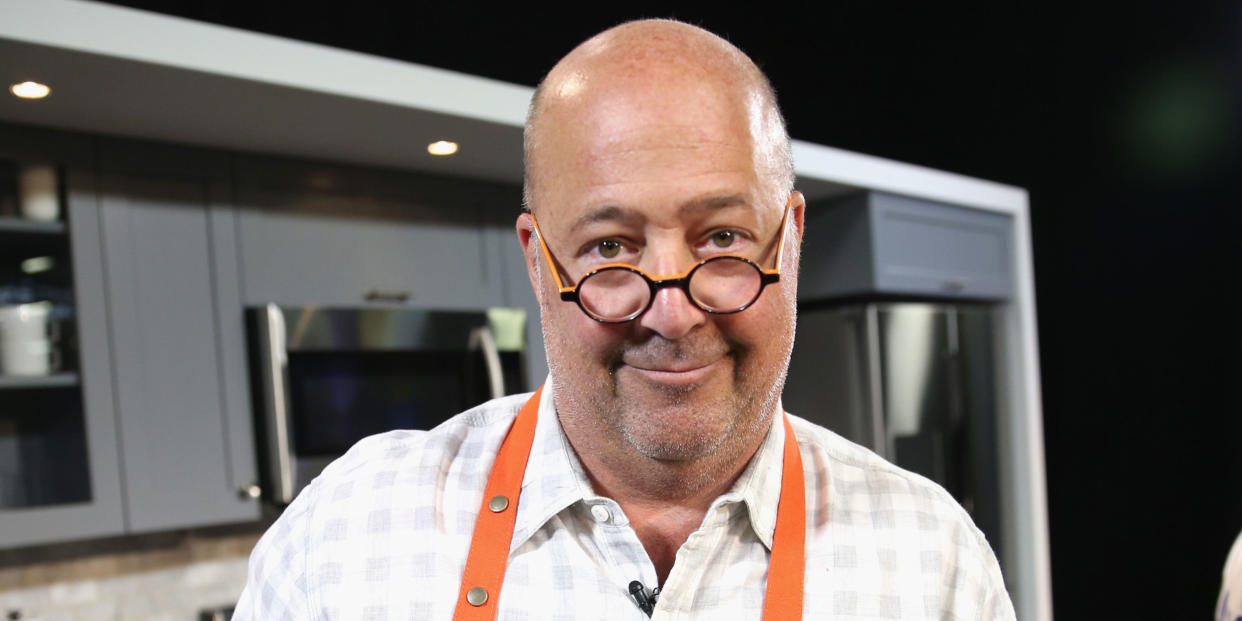
If you want to learn a lot about a person, forget Facebook-stalking or scoping out his bookshelves-head straight to the refrigerator.
"The ingredients in someone's fridge tell a lot of different stories," says Andrew Zimmern, a man after our own food-loving hearts. As the creator of Bizarre Foods, Zimmern has sampled dishes in more than 150 different countries, and just about every time, he winds up bringing something home with him.
"It's usually salt, chiles-nonperishable stuff I can pack easily," he says.
The chef and mentor on Food Network's All-Star Academy readily agreed to open up his three (yes, three) refrigerators to us, showing us exactly what's inside, and the stories behind some of his unexpected must-haves.
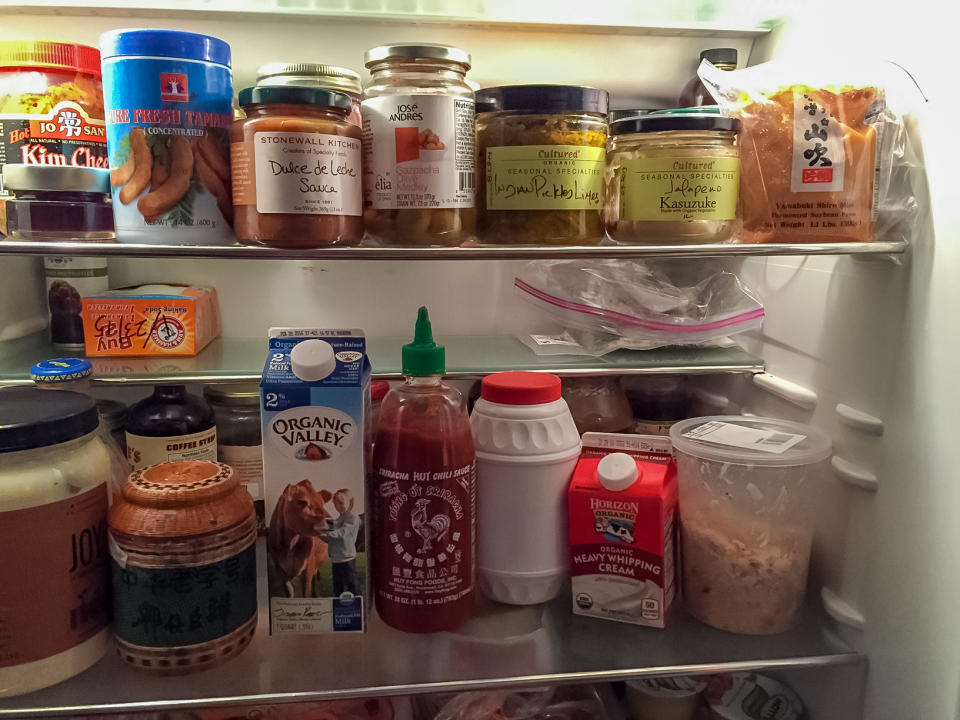
He Stocks One of the World's Rarest Foods.
If you looked at the photo above, you probably skimmed right over it. You might have assumed it was a jar of mayonnaise, or maybe even Marshmallow Fluff. The "it" in question is one of the hardest to find foods in the world, hidden right in plain sight in a white jar with a red lid: Red tahini.
"There are about three or four tahini makers throughout the Middle East who are still using 1,500 to 2,000-pound stone or granite wheels to grind sesame seeds into tahini," Zimmern says. "I went to the Jabrini brothers, who are known as the finest tahini makers in the world. The oldest brother is the only person I know of in the world who makes red tahini, and when he passes away, it will be gone. It's very precious to me."
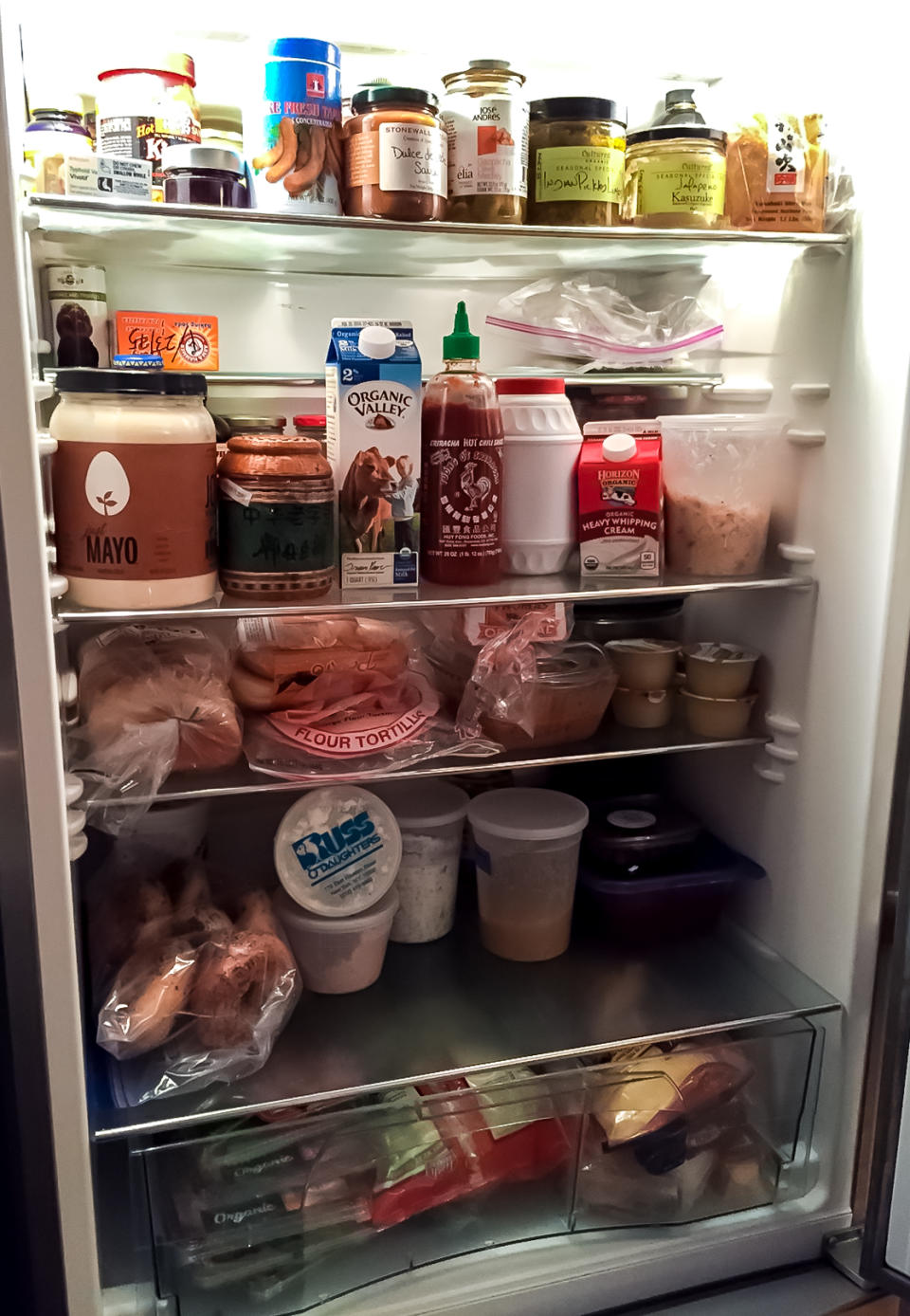
Red tahini is made by washing and drying sesame seeds by hand, then sweeping the seeds along the bottom of a wood-fired oven to toast them before grinding them. This gives them a reddish brown color, Zimmern explains, resulting in an earthier, more complex flavor than the typical tahini.
"I use it all the time in my cold noodle dishes, or to season sauces in Middle Eastern foods, like falafel," he says. "I very little left and it's very upsetting."
"When I make a quick stir fry and add a tablespoon of that to it, it's like sprinkling excellence in rainbow form."
This Ingredient Makes Every Dish Magical.
"Just to the left [of the red tahini, sriracha and milk] is douban, or doubanjiang, a fermented chili bean paste," Zimmern says. "The Chengdu government in China runs a factory there. I visited the guys on the line, and they took me to this room where they keep the really good stuff."
They showed him jars of doubanjiang that'd been aged for 25 and 50 years, and let him take home some.
"Like wine, douban changes with age," he says. "When I make a quick stir fry and add a tablespoon of that to it, it's like sprinkling excellence in rainbow form."
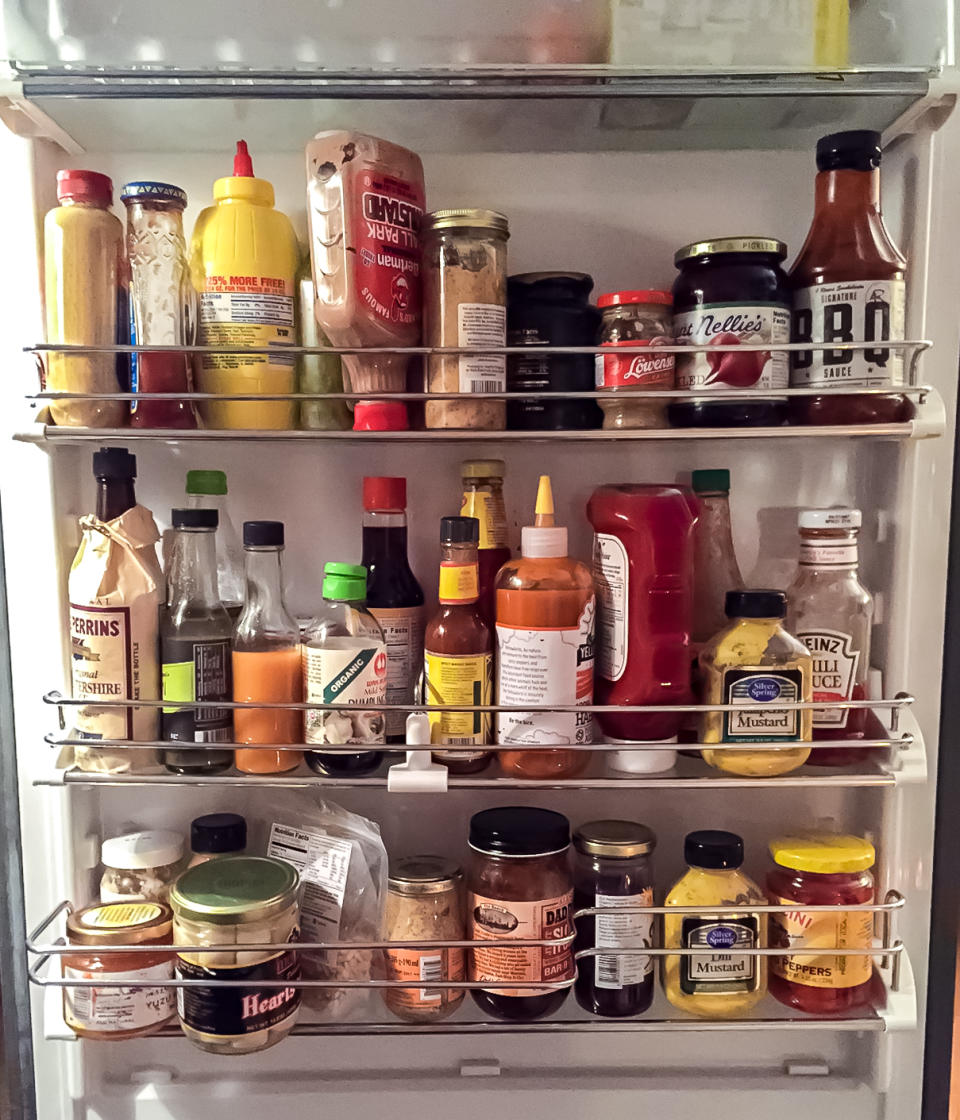
He's Got a Wall of Condiments.
Like all of us, Zimmern's fridge door is packed with sauce bottles. Take a closer look, though, and you may notice a recurring theme: Mustard, mustard and more mustard.
"My Cleveland friends got me hooked on stadium mustard," Zimmern says. "I'm from New York, so I'm a Goulden's guy, but I've started collecting mustards from around the world."
He stocks ones from the Czech Republic, Poland, China and Japan, as well as a spicy, horseradish-infused blend from Kazakhstan.
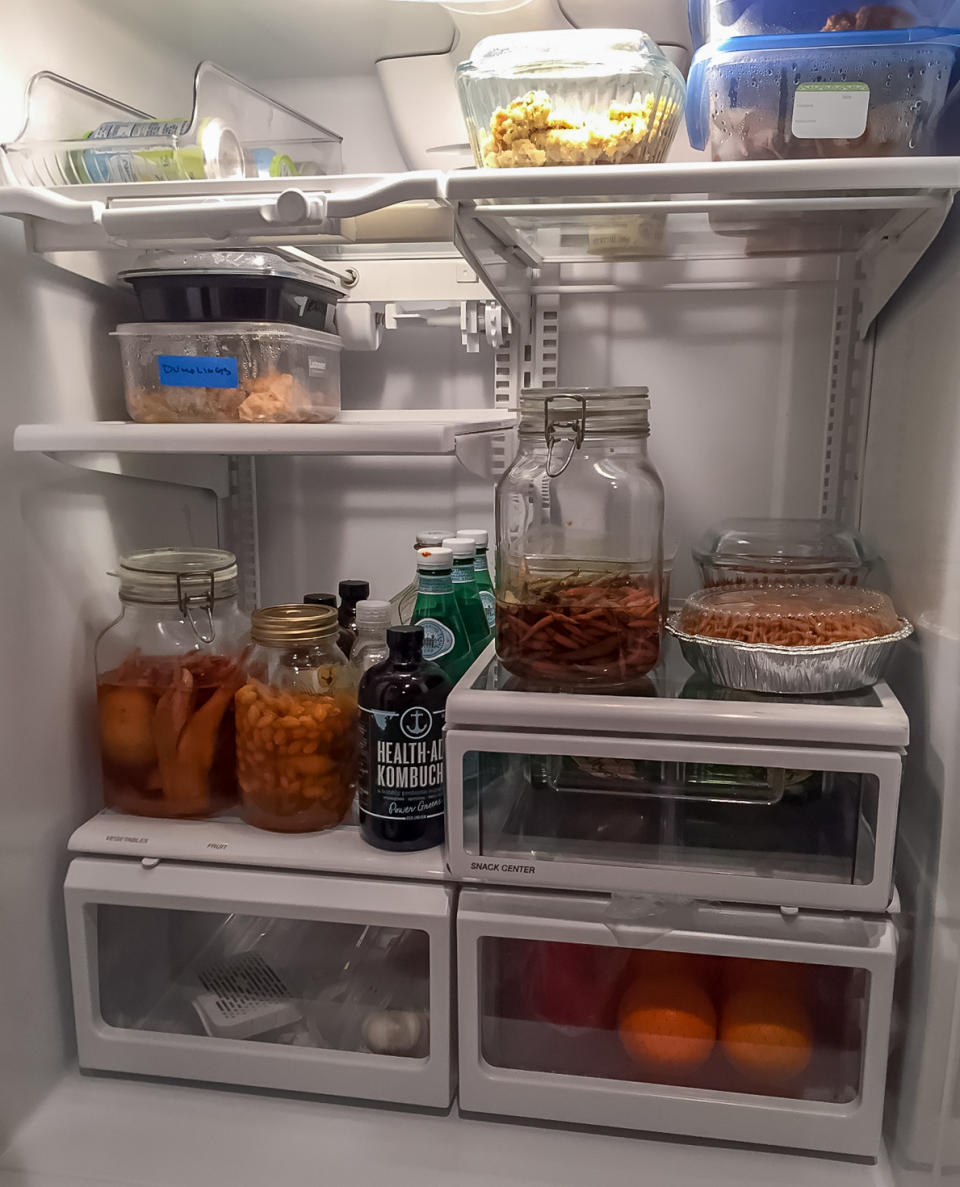
He's Got a Few Projects Going on in His Fridge.
Zimmern makes his own hot sauces, which require him to ferment chiles, then puree and strain them. The red and green South African chiles in the large mason jar, for example, have been fermented for two years.
"I use some of them to make a quick blender jam that I put on roast chicken with peaches," he says. "It's a sour counterpoint to the meal."
That's just one of three fermentations he's got going on in his fridge.
"It doesn't take long to ferment a chile," Zimmern explains. "The wall of the vegetable is smaller than other kinds, so you can ferment it in three or four days. It's one of those things that's easy to make and have around."
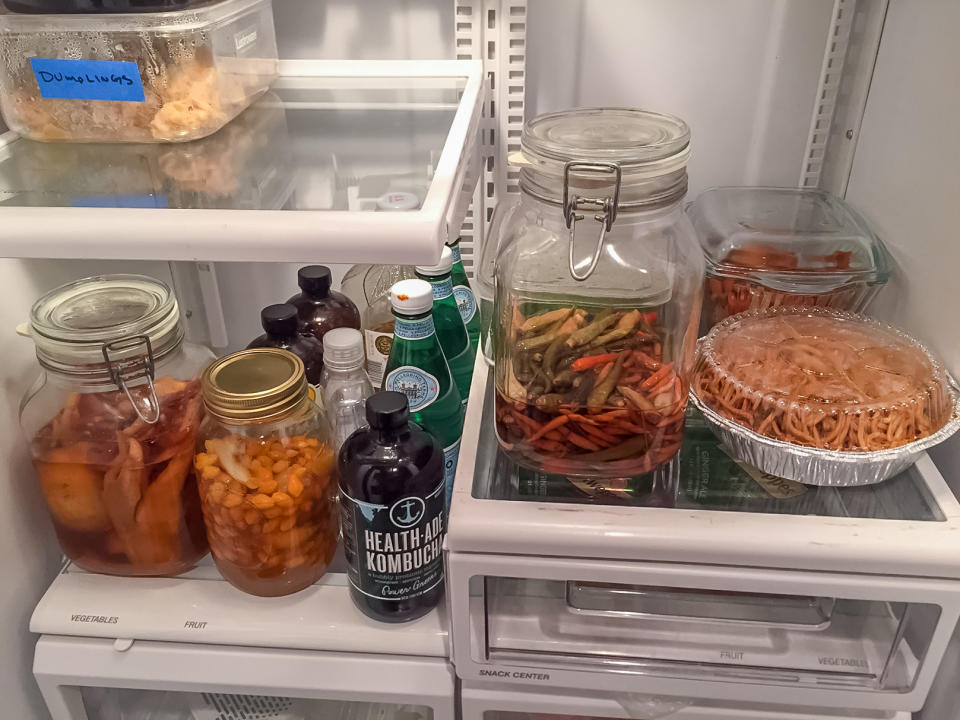
Another jar contains yellow chile peppers from South America, which Zimmern fermented with salt for a week, to pickle the peppers, then seasoned with sugar, grapefruit vinegar and Meyer lemon-fruit, peel and juice-to bring out new layers of flavor.
"I'll leave it for a couple months to mellow out and let the magic happen, then puree it into a hot sauce," he says.
We'll make a note to stop by in a few months.
You can catch Zimmern on the new season of All-Star Academy, which premieres on Sunday, Feb. 14, at 10 p.m. on Food Network.
Follow Delish on Instagram.
You Might Also Like

